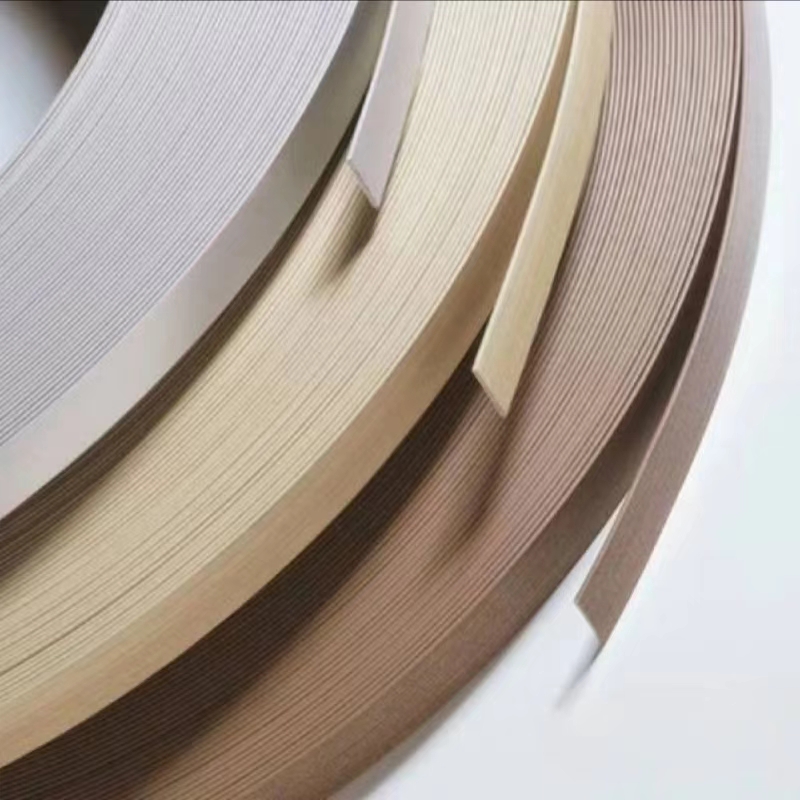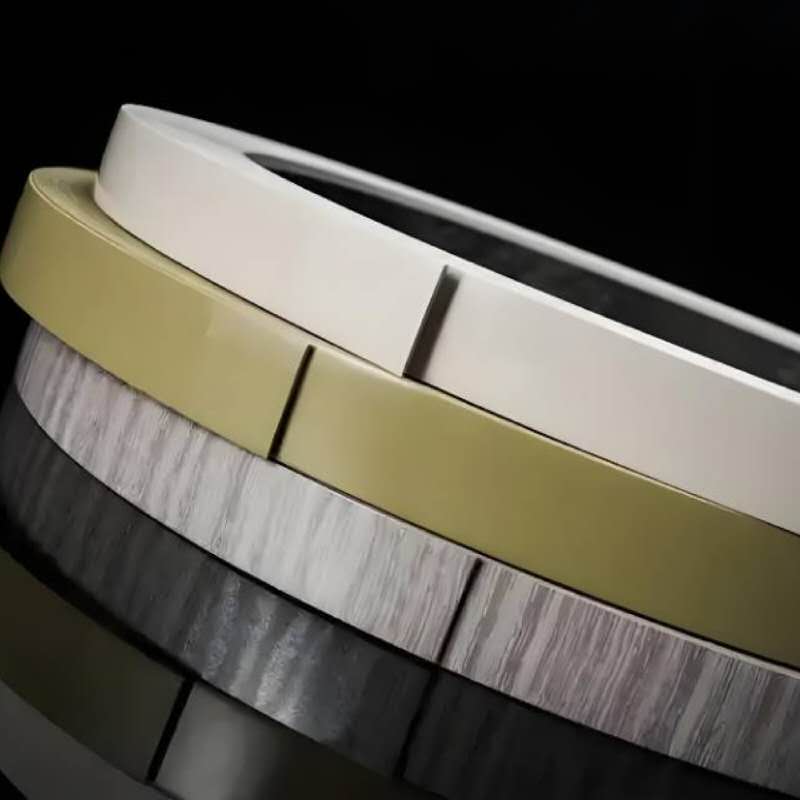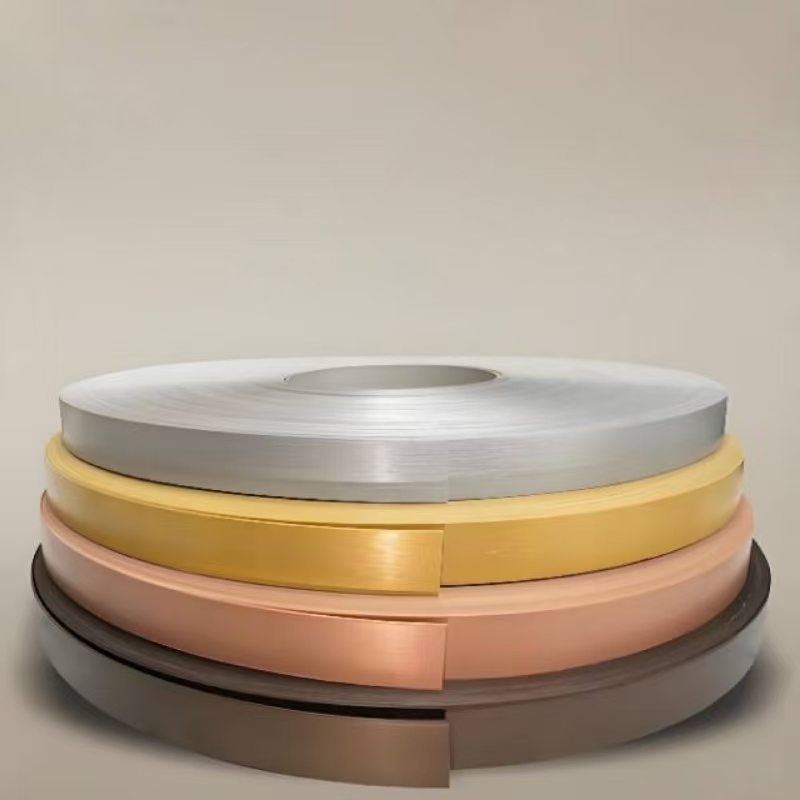As a common decorative and protective material, wood edge banding plays an important role. Edge banding is not only a decorative accessory, it can also effectively protect the edge of the wood from damage and improve the beauty and durability of the entire wood product. Therefore, the selection of wood edge banding needs to consider not only factors such as material, color, and craftsmanship, but also its size, especially the width of the edging strip.
This article will discuss the question "How wide should wood edge banding be?" and analyze in detail the impact of wood edge banding width on different application scenarios and how to choose the appropriate edge banding width.

What is the role of wood edge banding?
Wood edge banding is a strip material used to decorate and protect the edges of wood, particleboard, density board and other boards. By sticking the edging strip to the edge of the board, it can not only beautify the appearance of the product, but also prevent external factors such as moisture and dust from invading the board, reducing the corrosion and aging of the wood. Wood edge banding is often used in the production process of furniture, flooring, cabinets and other products.
The main functions of wood edge banding include:
● Protective effect: Prevent the edges from moisture, cracking or wear, and extend the service life of furniture and wood products.
● Aesthetic effect: Wood edge banding is highly decorative and can add delicate decorative effects to wood products and enhance the overall appearance.
● Enhanced durability: Through the protection of edging strip, the physical properties of wood are optimized and are not easily affected by the external environment.
What are the material options for wood edge banding?
The materials of wood edge banding are usually divided into two categories: solid wood edge banding and composite edge banding. Solid wood edge banding is widely used in furniture, cabinets and high-end woodworking due to its natural wood texture. Composite edging strip, such as melamine edge banding, PVC edge banding, etc., is often used in the manufacture of economical furniture. Edge banding of different materials varies in appearance, durability and cost. Therefore, when choosing edging strip, in addition to width, the characteristics of the material should also be considered.

How wide should wood edge banding be?
The width of wood edge banding is usually set by the manufacturer according to the application scenario and user needs, and there are certain standard sizes. According to the common wood edge banding specifications on the market, its width is generally divided into 9, 12, 15, 16, 18, 19, 20, 21, 22, 23, 25 mm, etc., and some customized sizes are also available.
Wood edge banding width range
The width of common wood edge banding generally ranges from 9 mm to 25 mm. The specific width is often determined by the thickness of the board and the use requirements of the edging strip. The following are the applicable situations for common width selection:
● 9mm, 12mm: Suitable for thin boards (such as 9mm, 12mm thick melamine boards or blockboards) or designs with simpler appearance requirements.
● 15mm, 16mm: These widths of wood edge banding are usually used for boards with moderate thickness, which are commonly seen in the production process of ordinary furniture. Edge banding strips of this width are not only beautiful, but also can provide appropriate visual coverage to avoid excessive exposure of the board edge.
● 18mm, 19mm, 20mm: These wider wood edge bandings are often used for thick boards (such as medium-density fiberboard and plywood), especially for furniture or decorative materials that have high requirements for strength and durability.
● 21mm, 22mm, 23mm, 25mm: Suitable for extra-thick or heavy boards, especially for higher-end woodworking projects such as office furniture, high-end home customization, etc. These edge bandings provide a larger coverage area, help enhance bonding strength, and better protect the edges.
Customized width
In some special applications, wood edge banding may need to be customized according to customer needs. Customized edge banding widths can better meet the requirements of special projects, especially when customers require furniture or woodwork products with specific design styles and visual effects, customized wood edge banding widths become an important solution.

What is the basis for selecting wood edge banding widths?
Choosing the right width of wood edge banding is not only for the appearance, but also closely related to its functionality, stability and processing technology. Edge bandings of different widths are suitable for boards of different thicknesses, different usage environments, and different design styles. Therefore, multiple factors need to be considered when choosing the width of edging strips.
Matching of board thickness and edge banding width
The selection of wood edge banding width should first consider the thickness of the board. In practical applications, wood edge banding is often used for boards with a thickness of 3/4 inches (about 19mm), such as plywood, medium-density fiberboard (MDF), and particleboard. For these common boards, edging strips with a width of 18mm to 25mm are usually more suitable. This is because:
● Board thickness affects coverage: Thicker boards require wider edging strips to effectively cover the edges of the boards, prevent the rough texture of the wood from being exposed, and increase the visual layering.
● Increase stability and protection: Wider edging strips provide a larger contact surface, which can enhance the adhesion between the edge banding and the board, thereby improving the protection of the wood edge and preventing problems such as cracking and peeling on the board edge.
For thinner boards (such as 5mm, 9mm, 12mm, etc.), choosing narrower edging strip (such as 9mm, 12mm wide) can better balance the aesthetics and protection functions, while avoiding the edge banding width being too large, which affects the coordination of the appearance.
Design style and appearance requirements
The width of wood edge banding is also affected by the design style and appearance requirements. In some modern minimalist style furniture designs, designers often choose narrower edging strip (such as 9mm or 12mm) to highlight the material and color of the board itself, making the entire furniture more concise and refined. In traditional or classic style furniture, wider wood edge banding (such as more than 20mm) can add a sense of heaviness and enhance the overall decorative effect, which is in line with the retro or classical design concept.
Convenience of processing and installation
The width of the edging strip is also closely related to its convenience of processing and installation. Wider edge banding requires more precise installation technology during construction due to its large coverage area, especially in the cutting and fitting process, which may increase certain difficulties. For most woodworking projects, 18mm to 20mm wide wood edge banding can meet most requirements and is relatively easy to install.
However, in some high-end custom furniture that requires high-precision processing, wider edging strip (such as 23mm or 25mm) can provide more aesthetics and stability, but it also requires more professional installation tools and processes.
Environment and usage scenarios
Environmental factors will also affect the choice of edge banding width. For example, when furniture is used in humid environments such as kitchens and bathrooms, choosing wider edge banding can provide more protection and reduce moisture intrusion into the edges of the wood. In some low-humidity environments, choosing narrower edge banding can be simpler and reduce material waste.

Common misunderstandings about edge banding width
The wider the width, the better?
Not all situations are suitable for choosing overly wide edging strip. For some thin boards, overly wide edging strip may affect the appearance and lead to an overall inconsistent design. In addition, wider edge banding will increase production costs, so choosing the right edge banding width is the best solution.
Ignore processing accuracy
When choosing edging strip, the processing accuracy should be considered at the same time when considering the thickness of the board and the width of the edging strip. If the oversized edge banding is not cut accurately, it may affect the installation effect and cause visual unevenness. Therefore, processing accuracy is a factor that cannot be ignored when selecting edge banding.
How to Get Discounted Edge Banding Directly from a Factory?
To save costs on edging strip purchases, buying directly from a manufacturer like Tingjie is the best option. We provide customized ABS and PVC edge banding with bulk discounts and factory-direct prices. Our high production capacity and advanced manufacturing technology ensure consistent quality and reliable supply for customers in Europe, the Middle East, and Asia. Whether you need wholesale supply, competitive quotes, or special promotions, contact us today for the best deals!




